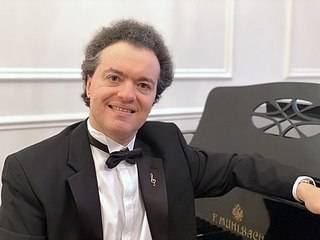|
Back
Visitor from Another Universe New York
Isaac Stern Auditorium, Carnegie Hall
05/02/2023 -
Johann Sebastian Bach: Chromatic Fantasia and Fugue, BWV 903
Wolfgang Amadeus Mozart: Piano Sonata No. 9, K. 311
Frédéric Chopin: Polonaise No. 5, Op. 44
Sergei Rachmaninoff: 12 Romances, Op. 21: 5. « Lilacs » – 13 Preludes, Op. 32: 8. A minor – 10 Preludes, Op. 23: 10. G‑flat Major – Etudes‑Tableaux, Op. 39 Nos. 1, 2, 4, 5 & 9
Evegny Kissin (Pianist) 
E. Kissin
“I do not believe in the artist that discloses too much of his images. Let [the listener] paint for themselves what the ‘Etudes‑Tableaux’ most suggest.”
Sergei Rachmaninoff
For over four decades, Evgeny Kissin has played piano. And each time, the piano and the pianist become younger and younger. More and more dazzling. Further and further into a pianistic paradise.
Nobody doubts either his genius or his eclecticism. Whether transcribing ancient Jewish songs or accompanying Renée Fleming, he is magic. Last night, he played a history of music.
To wit: one work each of the greatest Baroque composer, the greatest Classical composer, and the (arguably) most romantic Romantic composer with another half devoted to the most passionate echt‑post-romantic composer
Mr. Kissin was in a world–or a whirling–of his own. Some can admonish his choice of coruscating finger work rather than contour coloring. Yet one could equally criticize Einstein for living in a universe of quarks and electrons rather than our ordinary world. And this was the way the pianist sees his world.
Which is why the earthbound New York audience should have been shocked by the first notes of Bach’s Chromatic Fantasy and Fugue. No dulcet introductory gentle music to start with. Instead, Mr. Kissin walked out, sat down and unloaded a tornado of notes onto the unsuspecting listeners.
To get back to Einstein, Mr. Kissin solved the quantum question: waves or particles? These were waves of notes. Bach on his harpsichord or virginal would have had to give equal weight to each note. Mr. Kissin never worried about that: his fingers swept over the keyboard. And if one didn’t grasp the architecture of the work, remember that Bach called it a Fantasy, so Mr. Kissin let the fantasy take him to another dimension.
The following Fugue was more thoughtful, less viscerally exciting, but it worked.
The following Mozart D Major Sonata was startling change. The Bach had been played like a speeded‑up camera showing thousands of slaves creating a Babylonian ziggurat high and higher, unsure where they were going. Mozart’s work was enclosed like a jewel‑box. And was probably not played in the fashion of its devotee.
Mozart had written it for a young female pianist. And while she might have been talented, Mr. Kissin played the Sonata’s first movement like it was a Hammerklavier. Dazzling runs down the keyboard, shining trills (and nobody, not even a Trifonov, plays trills like Kissin), different voices.
The second movement gave a slight rest. The finale, though, showed the double-personality of Mozart and Kissin. The opening theme was ordinary enough. But the rondo was played with a series of faux‑drama, faux‑emotions. This was a Mozart of great humor, and Mr. Kissin knew it.
Finishing the first half was the Chopin F‑Sharp Minor Polonaise. Rather, the program and the printed music said Chopin. Mr. Kissin predictably played it like Franz Liszt. Forget the pauses and dancing interludes. This was Chopin played with speed, power, fury. This Polonaise was less the polished Polish, more the brutal Russian.
One never questioned the eight Rachmaninoff works. Mr. Kissin’s virtuosity was manifest throughout, and his B Minor Etude‑Tableau was quicksilver. Yet for the most part, this was a very different Evgeny Kissin, an artist of the utmost sensitivity. Here, the 51‑year‑old artist established that in 42 years on stage, his sheer notational thicket could–when necessary–transubstantiate into a forest of the most luminous sounds and perceptions.
The audience wouldn’t let him go, so he played three Rachmaninoff encores. Finishing with–yeah, wouldn’t ya know it?–the C‑Sharp Minor Prelude. After the first A‑note, they whooped like Garland encoring with Over the Rainbow. But who could blame them? Mr. Kissin made it a study in rubato, ending those endless notes like they were a series of amens.
Harry Rolnick
|